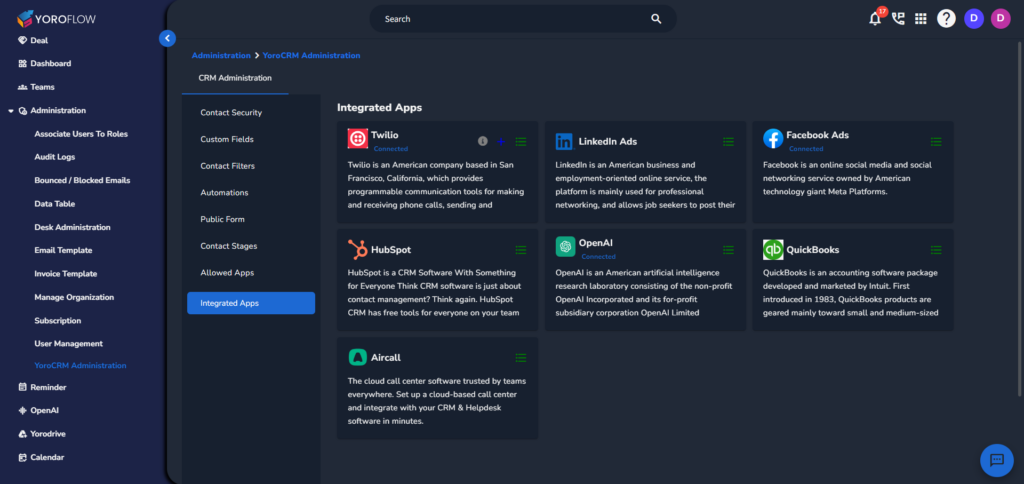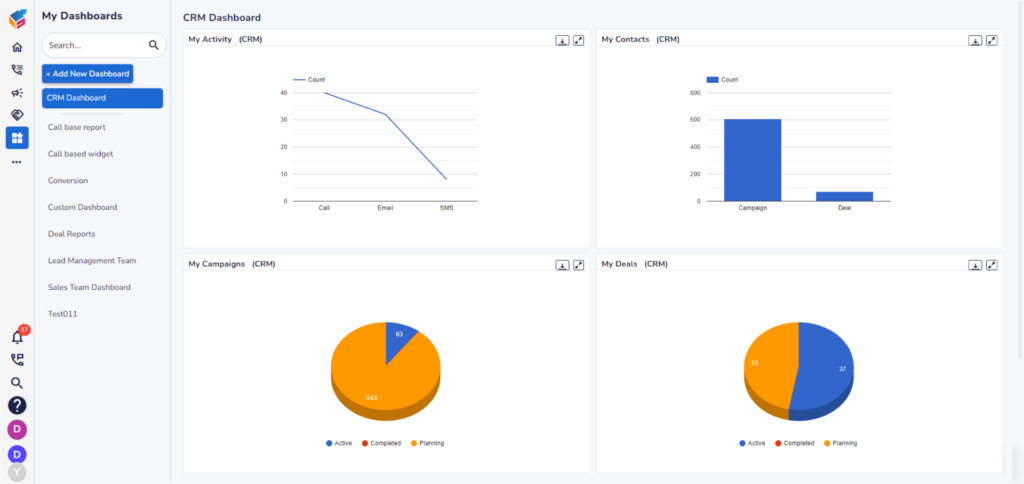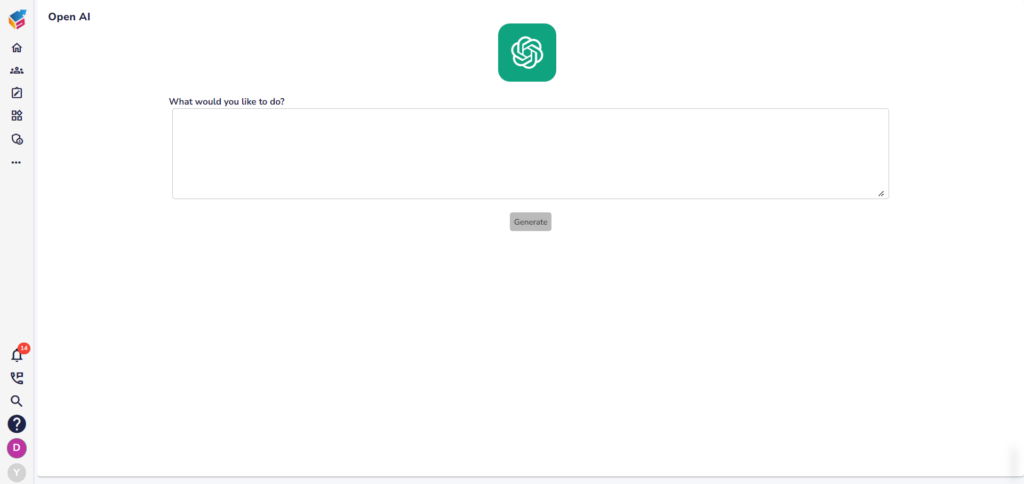Table of Contents
In the dynamic and competitive realm of business, the mastery of customer communication emerges as a critical linchpin for fostering exceptional customer experiences, ensuring satisfaction, and cultivating enduring brand loyalty. This article serves as a comprehensive guide, delving into the essential strategies, real-world examples, and best practices that collectively elevate customer communication across diverse touchpoints.
Understanding that customer communication extends far beyond mere interactions, the focus here is on crafting a holistic approach that considers every facet of the customer journey. From personalized engagement and proactive interactions to harnessing the power of omnichannel communication, the aim is to provide businesses with a roadmap to not only meet but exceed customer expectations.
By exploring successful examples, such as YoroCRM‘s transparent customer service and precision in personalized recommendations, the article illustrates how effective communication contributes to brand success. Furthermore, the incorporation of knowledge base software, Sales CRM systems, and AI in customer service underscores the vital role technology plays in enhancing communication efficiency.
Ultimately, this exploration underscores the pivotal role of strategic and customer-centric communication in navigating the intricacies of the contemporary business landscape, where customer experiences are not merely transactions but integral elements shaping the very essence of a brand.
Understanding Customer Communication
In the intricate tapestry of business relationships, customer communication transcends transactional exchanges; it encapsulates the entirety of a customer journey with a brand. Beginning with the initial touchpoint and extending seamlessly into post-purchase interactions, effective communication serves as the foundational bedrock upon which a positive customer experience is built. It is a dynamic and ongoing dialogue that shapes perceptions, fosters connections, and influences customer satisfaction.
From the moment a potential customer encounters a brand to the ongoing engagement after a purchase, every interaction forms a thread in the narrative of their experience. Clear, personalized, and timely communication at each juncture not only addresses immediate needs but also cultivates a sense of trust and loyalty. Brands that prioritize comprehensive communication strategies recognize that the journey does not conclude with a sale; instead, it evolves into a continuous relationship.
This holistic approach to customer communication acknowledges the multifaceted nature of customer interactions, emphasizing the significance of maintaining a consistent and positive dialogue throughout the customer lifecycle. It is a strategic commitment to understanding, responding to, and anticipating customer needs, ensuring that every communication touchpoint contributes positively to the overall customer experience.
Best Practices for Customer Communication
Personalization and Tailoring
Crafting tailored communication that aligns with individual customer preferences and behaviors is pivotal. Personalized interactions, spanning emails, messages, and support interactions, contribute significantly to the enhancement of the overall customer experience. By acknowledging and responding to the unique needs and preferences of each customer, businesses not only foster a sense of individual importance but also establish a deeper connection. This tailored approach strengthens customer loyalty, satisfaction, and engagement, underscoring the importance of personalization in creating positive and lasting impressions in the realm of customer communication.
Omnichannel Communication
Embrace omnichannel communication to provide a seamless experience across various channels. Integration ensures that customers can transition effortlessly between platforms without losing context. Omnichannel communication is paramount for a seamless customer experience. Embracing this approach ensures that interactions across various channels are integrated, allowing customers to transition effortlessly between platforms without losing context. This cohesive strategy not only enhances convenience for customers but also contributes to a unified brand experience, fostering engagement and satisfaction. By breaking down silos and integrating communication channels, businesses can create a harmonized environment where customers receive consistent and personalized interactions, ultimately strengthening brand loyalty and maximizing the effectiveness of their communication efforts

Proactive Customer Engagement
Initiate communication proactively, whether it’s through informative newsletters, updates on new features, or relevant content. Proactive engagement keeps customers informed and invested in your brand. Proactive customer engagement is pivotal in cultivating strong brand connections. Whether through insightful newsletters, updates on novel features, or pertinent content, initiating communication proactively ensures customers remain informed and deeply invested in your brand. This approach not only keeps them abreast of developments but also fosters a sense of loyalty, as customers appreciate brands that consistently reach out with valuable, relevant information, creating a foundation for enduring customer relationships and sustained brand loyalty.
Utilizing Customer Feedback
Actively seek and utilize customer feedback. Feedback mechanisms, such as surveys or social media polls, offer valuable insights for improving products, services, and overall customer satisfaction. Actively engaging with customer feedback is a cornerstone of successful business strategies. By implementing feedback mechanisms, such as surveys or social media polls, businesses gain valuable insights into customer preferences and perceptions. This proactive approach not only facilitates continuous improvement of products and services but also fosters a deeper understanding of customer needs. Customer feedback serves as a valuable compass, guiding businesses towards enhancing overall satisfaction, strengthening customer relationships, and ensuring that products and services align seamlessly with evolving market expectations.
Effective Internal Communication
Ensure internal teams are aligned in their understanding of customer communication strategies. Consistent internal communication fosters a unified approach, reflecting positively in external interactions. Internal alignment is crucial for effective customer communication. Ensuring that internal teams share a comprehensive understanding of customer communication strategies is foundational to success. Consistent and transparent communication within the organization fosters a unified approach. This cohesion, in turn, positively influences external interactions with customers. When teams are synchronized in their approach and messaging, it not only enhances efficiency but also contributes to a seamless and cohesive customer experience. Internal harmony is a key driver for delivering a unified and positive brand image in all external customer-facing interactions.
Examples of Customer Communication Tools
Zappos' Customer Service
Zappos, renowned for exceptional customer service, exemplifies transparent and engaging communication. Their representatives go beyond problem-solving, creating meaningful connections with customers.
Amazon's Personalized Recommendations
Amazon utilizes customer data to offer personalized product recommendations. This targeted communication enhances the shopping experience, encouraging repeat purchases.
Apple's Product Launch Events
Apple’s product launches are masterclasses in building anticipation and excitement through effective communication. The carefully crafted events engage customers and create a sense of community.
Tools for Effective Customer Communication
Knowledge Base Software
Implementing knowledge base software enables customers to find answers independently. This self-service approach enhances efficiency and empowers customers. The implementation of knowledge base software empowers customers with a self-service approach, allowing them to find answers independently. This not only enhances the overall efficiency of customer support but also fosters a sense of empowerment among users. By providing a centralized repository of information, knowledge base software streamlines the resolution of queries, enabling customers to navigate and troubleshoot issues autonomously. This strategic utilization of technology not only improves customer satisfaction but also contributes to a more streamlined and effective support system, where users can access relevant information at their convenience, fostering a positive and empowered customer experience.
Sales CRM Systems
Customer Relationship Management (CRM) systems streamline customer interactions by centralizing data. Sales CRM tools facilitate personalized communication and effective client management.

At the core of modern customer-centric strategies, Customer Relationship Management (CRM) systems play a pivotal role in optimizing customer interactions. By centralizing data, CRM systems streamline the entire customer journey. Sales CRM tools, a subset of CRM, take this a step further by facilitating personalized communication and effective client management. This comprehensive approach ensures that businesses can tailor their engagements based on a deep understanding of customer needs and preferences. Ultimately, CRM systems serve as indispensable tools in creating meaningful connections, enhancing customer satisfaction, and fostering long-term relationships.
AI in Customer Service
Incorporating Artificial Intelligence (AI) into customer service processes is a transformative step towards enhancing efficiency. The utilization of AI-powered chatbots proves instrumental in providing instant responses to customer inquiries, effectively addressing common queries, and ultimately elevating overall customer engagement. By leveraging AI, businesses streamline their customer service operations, ensuring swift and accurate interactions. The implementation of such advanced technology not only expedites problem resolution but also contributes significantly to an improved customer experience. In essence, integrating AI into customer service processes represents a revolutionary approach that optimizes efficiency and elevates the standard of customer engagement in the digital era.

This technological integration not only streamlines customer interactions but also ensures 24/7 availability, providing a seamless and responsive experience. By harnessing AI capabilities, businesses enhance their customer service capabilities, offering prompt and accurate assistance. The result is a more efficient and effective customer service process that aligns with the demands of today’s dynamic and fast-paced consumer landscape.
Customer Retention through Communication
Effective customer communication serves as a linchpin for customer retention, establishing a crucial link between brands and their clientele. Through ongoing engagement with existing customers, brands cultivate a sense of loyalty, fostering an environment that encourages repeat business. A proactive customer retention strategy involves regular communication, exclusive offers, and personalized interactions. By consistently delivering value and tailored experiences, brands not only retain their customer base but also fortify their relationships, ensuring a positive customer journey that transcends individual transactions and builds a foundation for long-term brand loyalty.
Enhancing Brand Awareness
Building a strong online presence and connecting with the intended audience is heavily reliant on maintaining regular and well-thought-out communication with customers. Brands accomplish this through various channels, such as impactful social media campaigns, captivating email newsletters, and compelling content marketing efforts. Consistency in communication across these platforms is crucial, as it not only enhances brand awareness but also establishes authentic connections with the audience.
A cohesive and intentional communication strategy goes beyond merely conveying information; it reflects the brand’s identity, values, and purpose. This approach ensures that the brand remains prominently in the thoughts of customers, fostering long-term recognition and loyalty in a competitive landscape. By actively engaging with customers through well-crafted messages and content, businesses can create a positive and lasting impression.
This sustained effort contributes to building a community around the brand, where customers feel valued and understood, ultimately translating into loyalty and advocacy. In the dynamic digital landscape, effective communication emerges as a linchpin for brands aiming to not only survive but thrive in the ever-evolving marketplace.
Conclusion
Achieving mastery in customer communication is a continuous and dynamic journey demanding commitment, adaptability, and an unwavering customer-focused approach. This article emphasizes that by adopting the recommended best practices, businesses can elevate customer experiences and cultivate enduring relationships, thereby bolstering brand success. Whether harnessing the power of technology, drawing insights from successful models, or integrating valuable customer feedback, the bedrock of a flourishing customer-centric strategy lies in effective communication. In the ever-changing terrain of customer expectations, the pursuit of continuous improvement and innovation in customer communication emerges as indispensable for sustained business success. This commitment to refining communication strategies not only responds to current needs but also proactively shapes the future landscape, positioning businesses to thrive in an environment where customer engagement and satisfaction are paramount.




